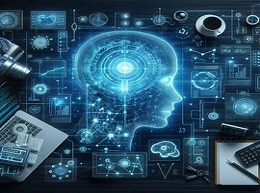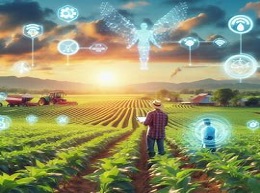Biometrics in Identity Verification: From Fingerprints to Facial Recognition

The Evolution of Biometrics
Biometrics, the measurement and analysis of unique physical and behavioral characteristics, has revolutionized identity verification methods. This article delves into the evolution of biometrics technology and its applications in identity verification.
Fingerprint Recognition
Pioneering Biometric Modality
Fingerprint recognition, one of the oldest biometric modalities, identifies individuals based on unique patterns of ridges and valleys on their fingertips.
Example: Smartphone Unlocking
Modern smartphones utilize fingerprint sensors to authenticate users and unlock devices securely, ensuring only authorized individuals can access sensitive information.
Iris Recognition
Unique Iris Patterns
Iris recognition technology captures the intricate patterns in the colored part of the eye, known as the iris, to verify a person's identity with high accuracy.
Example: Border Control
Airports and border checkpoints use iris recognition systems to expedite passenger screening processes and enhance border security by accurately identifying travelers.
Facial Recognition
Biometric Analysis of Facial Features
Facial recognition technology analyzes unique facial features, such as the distance between eyes and shape of the nose, to identify individuals.
Example: Law Enforcement
Law enforcement agencies deploy facial recognition systems to match faces captured in surveillance footage with criminal databases, aiding in the apprehension of suspects.
Voice Recognition
Distinct Vocal Characteristics
Voice recognition software analyzes speech patterns, pitch, and tone to verify a person's identity based on their unique vocal characteristics.
Example: Voice Authentication
Financial institutions implement voice recognition technology for phone-based customer service, allowing customers to authenticate themselves securely without the need for passwords or PINs.
Behavioral Biometrics
Analyzing Behavioral Patterns
Behavioral biometrics track unique patterns in an individual's behavior, such as typing rhythm and mouse movements, to verify their identity.
Example: Online Banking
Online banking platforms use behavioral biometrics to detect fraudulent activities by analyzing deviations from a user's typical behavior, such as unusual login times or transaction patterns.
Multimodal Biometrics
Fusion of Multiple Biometric Modalities
Multimodal biometrics combine two or more biometric modalities, such as fingerprint and facial recognition, to enhance accuracy and reliability in identity verification.
Example: Access Control
High-security facilities employ multimodal biometric systems for access control, requiring multiple biometric factors for entry to sensitive areas, ensuring robust security measures.
Ethical and Privacy Considerations
Data Protection and Consent
Biometric data collection raises concerns about privacy and data security, requiring stringent measures to safeguard personal information and obtain user consent.
Example: GDPR Compliance
The General Data Protection Regulation (GDPR) mandates strict guidelines for the collection and processing of biometric data, ensuring individuals have control over their personal information.
Future Trends and Innovations
Advancements in Biometric Technology
Ongoing research and development efforts are driving innovations in biometric technology, including deep learning algorithms and wearable biometric devices.
Example: Contactless Biometrics
Contactless biometric solutions, such as palm vein recognition and gait analysis, are emerging as alternatives to traditional biometric modalities, offering convenience and hygiene benefits.
The Future of Identity Verification
In conclusion, biometrics technology continues to redefine identity verification methods, offering enhanced security, convenience, and accuracy across various industries. As biometric systems evolve and integrate with emerging technologies, they hold the potential to revolutionize how individuals authenticate their identities in a digital world. However, it is imperative to address ethical and privacy concerns while embracing the benefits of biometric authentication to ensure a secure and inclusive identity verification ecosystem.














